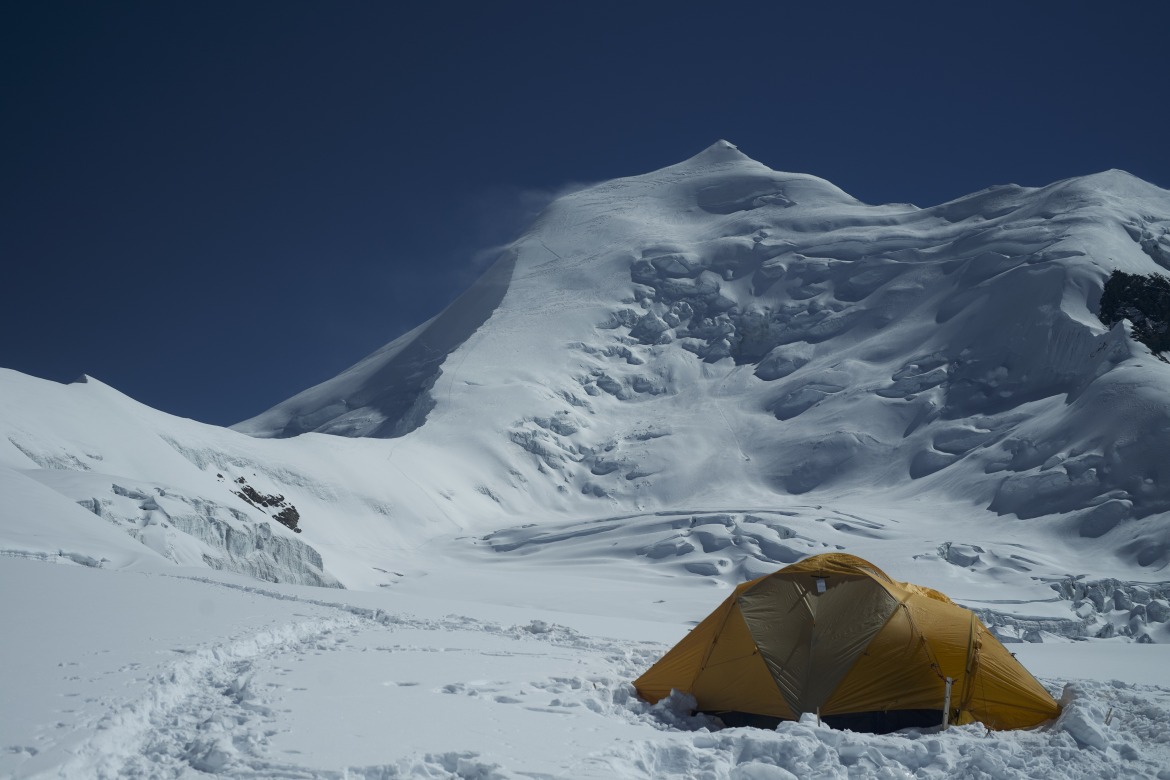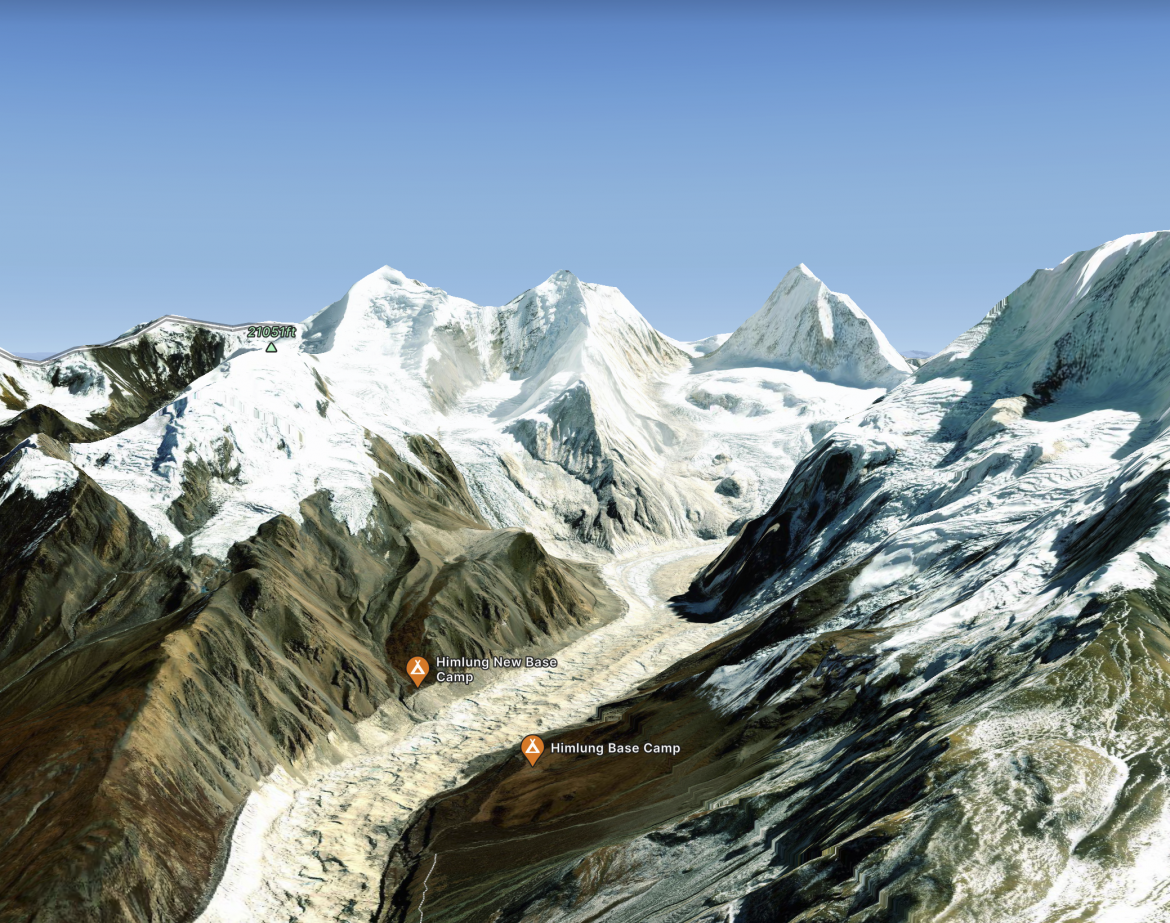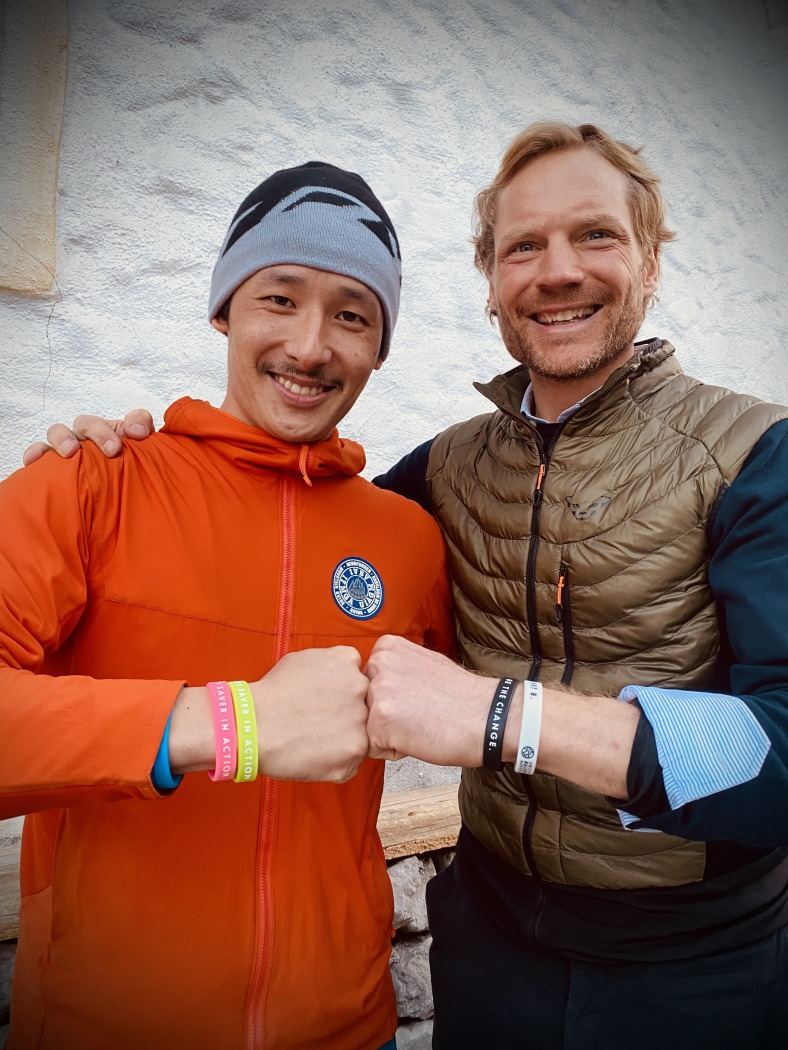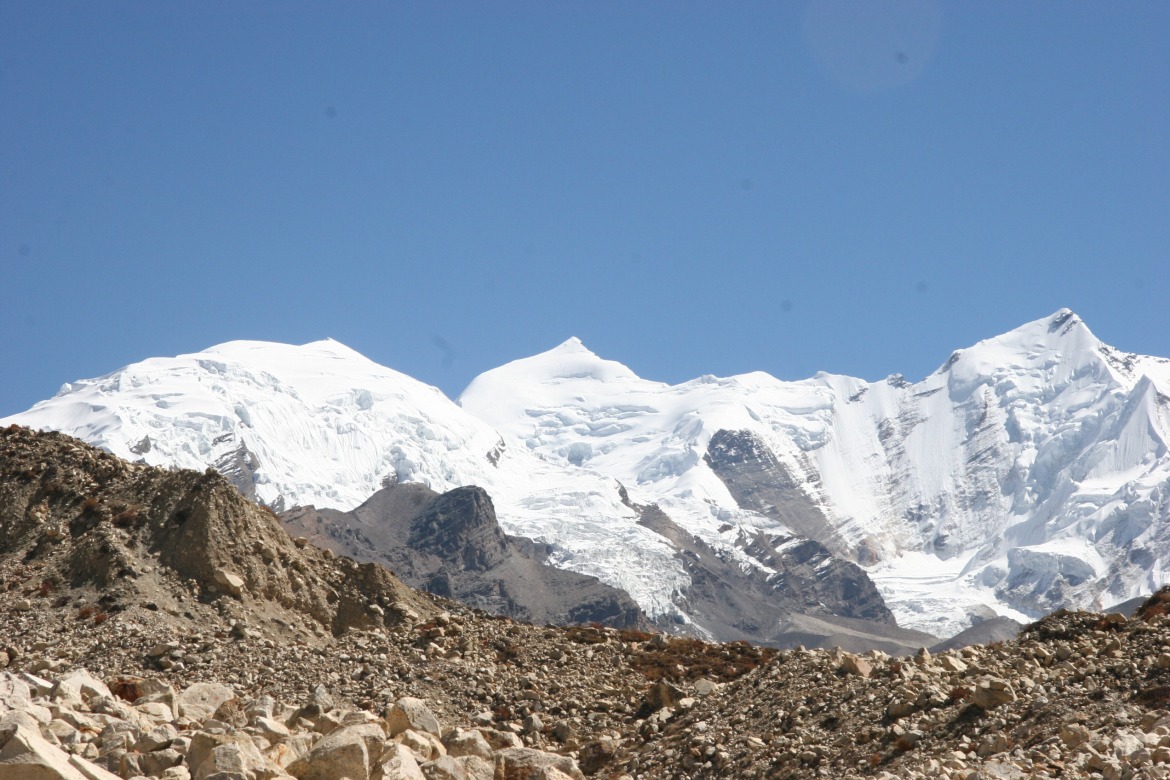On the last episode of Totally Deep, Dynafit CEO Bene Böhm was featured. During the interview, he mentioned a Nepal-based ski expedition with IFMGA guide Prakash Sherpa. Since the podcast’s release, Böhm and Prakash Sherpa have joined up in Nepal to execute their plans. The primary ski mountaineering objective is a speed ascent of Himlung Himal, a 7,126m (23,380 ft.) peak lying northeast of Nepal’s Annapurna region. The mountain bordering Nepal and Tibet is most often a mountaineering objective. According to a Dynafit press release, the peak’s first ascent is “speculated” to have been in 1983 — Himlung was officially approved to be climbed by Nepal in 1992. Further, the American Alpine Journal (AAJ) first mentions Himlung Himal in 1964, when a Japanese team spent 46 days on the mountain (five of which were “fine weather” before retreating. A 1983 entry in the AAJ specifies that an 11-person Japanese expedition attempted to summit, but there is no mention of topping out, which the AAJ calls an “attempt.” And a 1988 AAJ report states, “We had little information about the peak, knowing only that the summit had been reached once, by Japanese via the east ridge from the glacier above the Larkya La in 1984.” The mountain is now often guided. A close up view of the ascent ridge (center-left) on Himlung Himal. The planned ascent and descent is expected to go under eight hours basecamp to basecamp. Photo: Alpinist Climber Expeditions. Böhm is known for fitness and boldness. He climbed and skied Dhaulagiri VII (7,246m) in 6 hours, 6 minutes from base camp to summit and back. Prakash Sherpa (29) has been making a name for himself in the high Himalayas for years. He first began ascending larger peaks at 15 years old and has since climbed several 8000m mountains, including Everest. He ascended Makalu, Dhaulagiri, and Manaslu without supplementary oxygen. Sherpa are storied. However, only in recent years have their technical skills and gritty work ethic, which often forges the path for most 8000m aspirants, been recognized. Prakash Sherpa is part of a more empowered generation of Sherpa; he owns Alpinist Climber Expeditions, a Nepal-based guiding company. Himlung Himal’s two primary basecamps are shown. The ascent most often includes several camps along the way to the summit. Himlung Himal is the highest point on the lefthand skyline. Image: Fatmap. They plan to break the eight-hour threshold on their ascent and ski descent on the mountain. Himlung’s basecamp sits at 4,850m, with the route ascending the peak’s northwest ridge. Typically, climbers use two to three high camps over several days to break up the ascent and assist with acclimatization. Part of Böhm’s motivation for traveling to Nepal is to help raise awareness for the work of the World Wildlife Fund and his Helping Band initiative. Jason Albert comes to WildSnow from Bend, Oregon. After growing up on the East Coast, he migrated from Montana to Colorado and settled in Oregon. Simple pleasures are quiet and long days touring. His gray hair might stem from his first Grand Traverse in 2000 when rented leather boots and 210cm skis were not the speed weapons he had hoped for. Jason survived the transition from free-heel kool-aid drinker to faster and lighter (think AT), and safer, are better.


A 7000m Himalayan Speed Project
previous post


